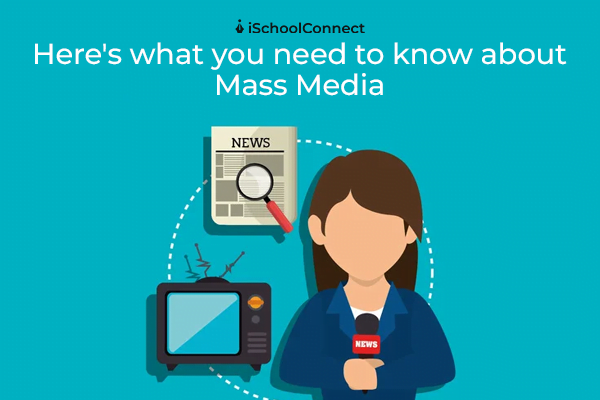Table of Contents
Mass media | An overview
In modern society, it has become essential for people to access information about world events, politics, entertainment, etc. This is where mass media comes into play. The mass media is a system of communication that reaches a large audience via mass communication technologies. These technologies include cinema, newspapers, magazines, and radio. Today, there are other types of mass media, including television broadcasting, radio broadcasting, blogs, and social networking sites.
The history of mass media!
The history of this communication medium predates thousands of years. Its earliest examples are cave paintings on walls. Additionally, animal skins that depicted important events in people’s lives are also an example of this media.
Over the years, mass media expanded its reach. It includes newspapers and printed magazines distributed via mail or delivery services.
However, the modern media is much more complex than it was a few years ago. That said, it continues evolving and will grow further as technology advances.
Why is this communication channel important?
Mass media creates awareness about important societal issues by informing the public about them. The communication channels can tell people about political campaigns, debates and elections, natural disasters, and other events that impact their lives. Additionally, it can also influence public opinion and shape social norms. As a matter of fact, this communication channel also focuses on entertainment, lifestyle, music, and other such events from across the globe.

What are the different types of mass media?
There are many different types of mass media, but they all have one thing in common – they are designed to reach as many people as possible.
The most common types include television, radio, newspapers, magazines, and the internet. Each type has advantages and drawbacks in its ability to reach an audience.
Print media
Print media refers to all forms of printed information. It is convenient for consumers because it can be used for free and requires no special equipment to view. Newspapers, magazines, and books are all forms of print media. However, it is expensive for advertisers to produce and distribute. Print media audiences tend to be older than television audiences and more affluent than radio audiences. Despite these challenges, print media has several advantages. In addition to its tangibility, print media also has credibility.

Outdoor media
Outdoor advertising is a form of advertising that uses billboards, signs, and other displays to get consumers’ attention while walking or driving by them. It is also known as “out-of-home” (OOH) advertising because it’s not inside your home. You can see this ad on billboards along busy highways, in front of stores near shopping malls, and on buses. However, outdoor advertising also poses some challenges. It’s difficult to know how many people actually respond to the advertisement. Additionally, weather conditions can impact OOH advertising, as rain, snow, or fog can make it difficult to see the ads.
Broadcasting media
Broadcasting media is a crucial component of our daily lives that facilitates the transmission of information from one place to another through electronic channels. It enables the dissemination of news, entertainment, and educational content across the globe, thereby providing a means of communication that is both efficient and effective. Radio and television are the most widely recognized forms of broadcasting media. Still, the proliferation of technology has enabled the emergence of newer forms, such as podcasting and streaming video, which have revolutionized the way we consume media. Broadcasting media has become a vital tool for sharing information and ideas and shaping the collective consciousness of society.
Digital media
Digital media are forms of communication that use computer technology to transmit information. Unlike traditional media, digital media do not rely on physical mediums such as paper or film. Instead, they are transmitted through the internet and are often considered more interactive than traditional media.
Digital media include websites, blogs, e-books, podcasts, and videos. It also includes social media platforms like Facebook and Twitter. These platforms allow users to interact with others by posting comments on each other’s posts or sharing information with their followers.
Key takeaways
- The mass media is an essential factor in educating and informing the public.
- It has become an integral part of our everyday lives, a powerful tool for disseminating information and shaping public opinion.
- Without mass media, it would be challenging for us to find out about events happening around the world.
- It helps with information about important issues like climate change or medical research advances.
- Also, it covers issues like natural disasters or acts of terrorism, helping people stay alert.
We hope this blog gave you a good insight into mass media. So if you are interested in studying mass media courses or want to pursue a career in mass media, visit us now and contact our counselors!!
Like this blog? Then read 15 best art schools in New York!
Wait, wait…before you go, why not take this funny poll?
FAQs
Question 1: What is the key aspect of mass media?
Answer: The key aspect of mass media is its ability to deliver information to large numbers of people at the same time.
Question 2: What are the examples of mass media?
Answer: Some examples include newspapers, magazines, movies, cable television channels, radio stations, and websites.
Question 3: What are the forms of mass media?
Answer: There are three primary forms of mass media –
- Print media – newspapers, magazines, and books.
- Broadcast – television and radio.
- Online media (overall web-based content).







